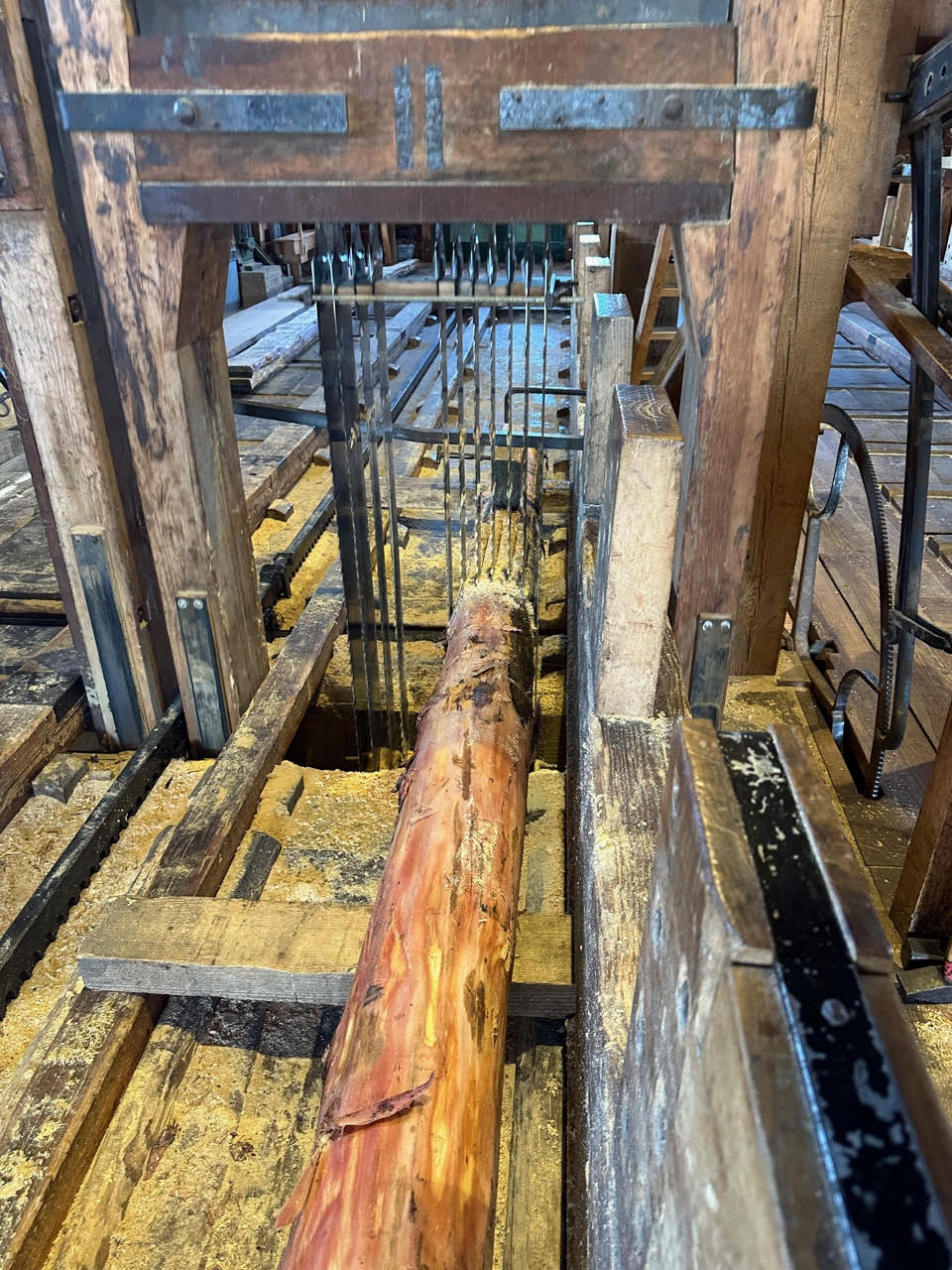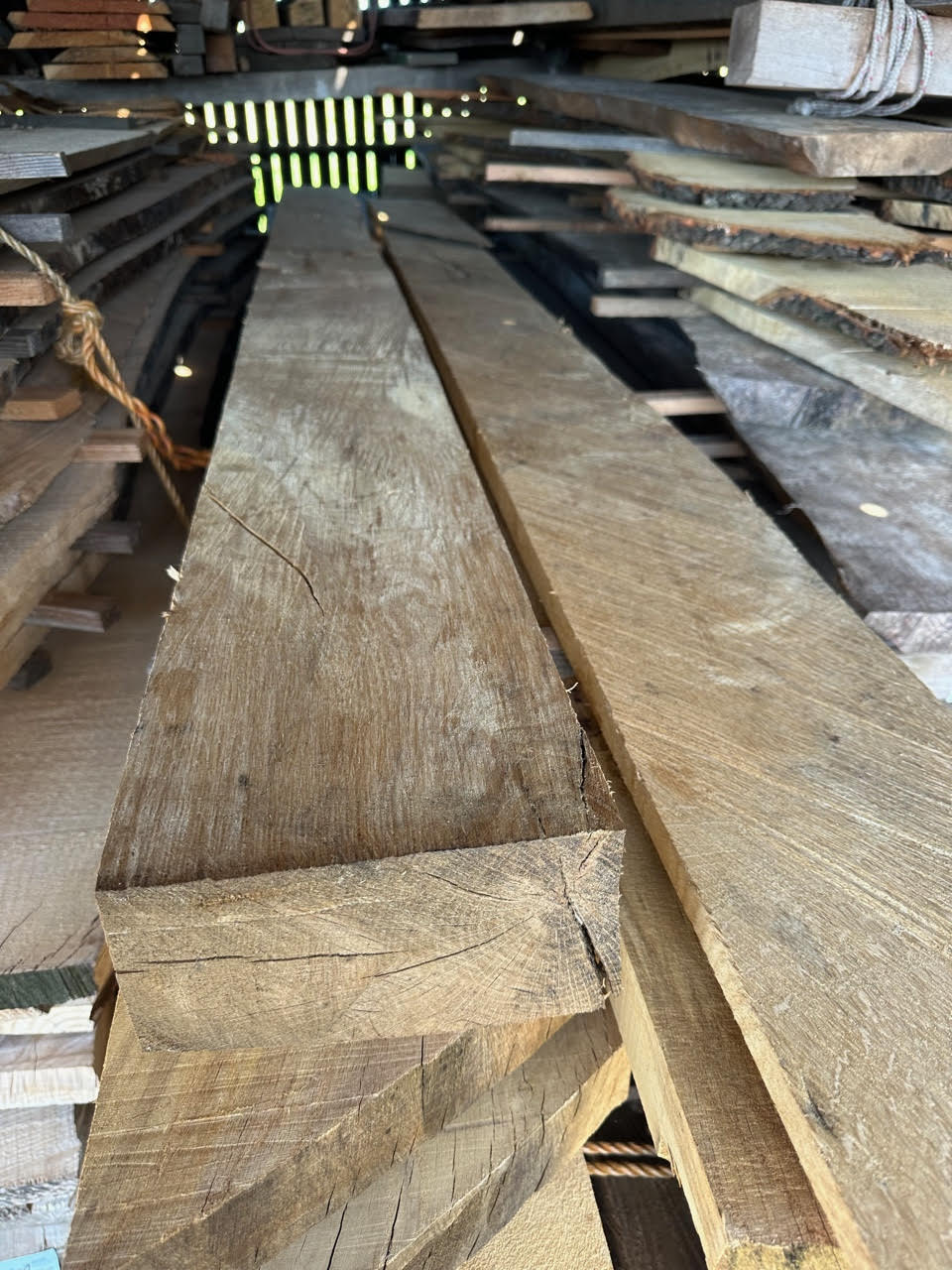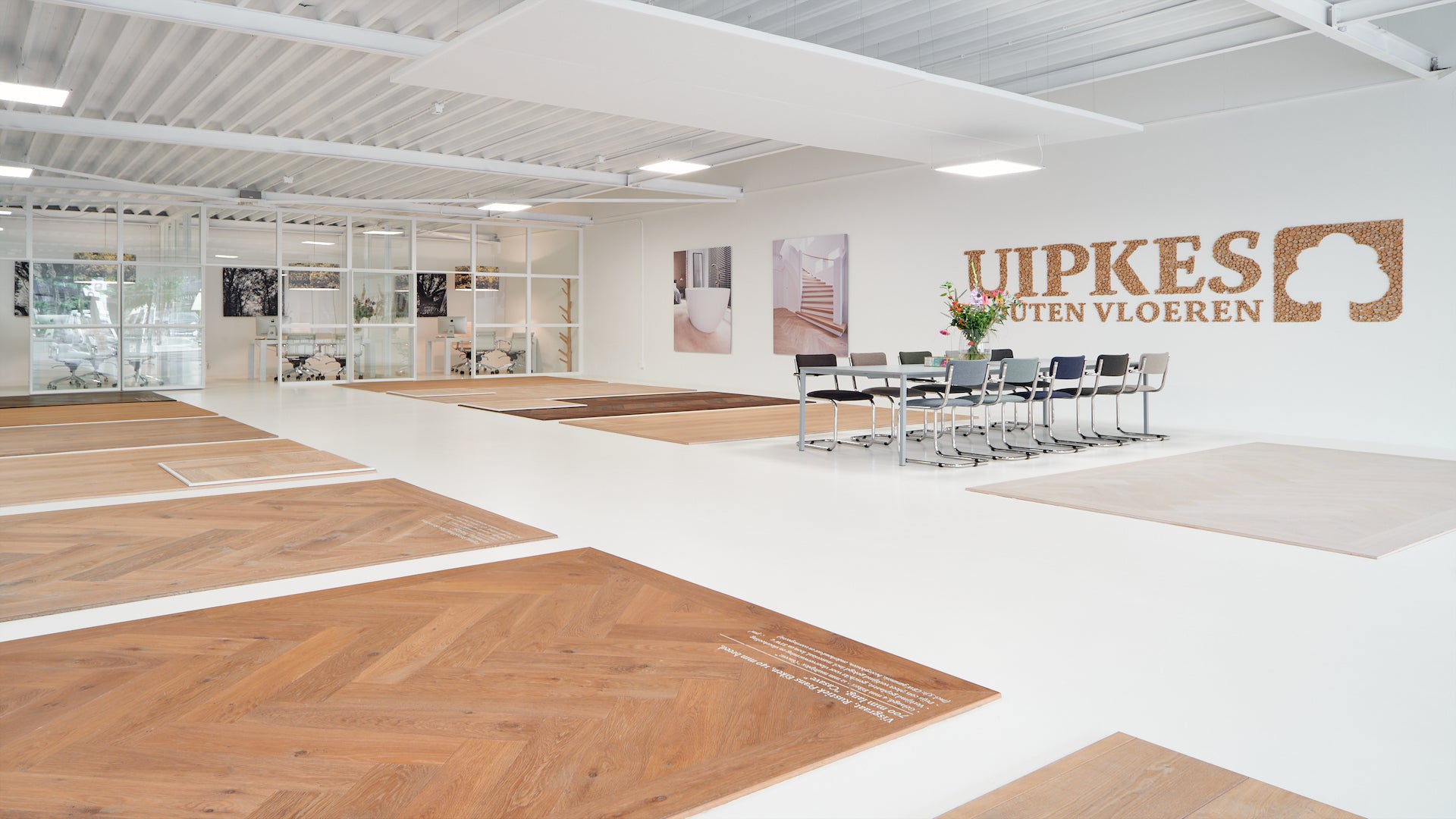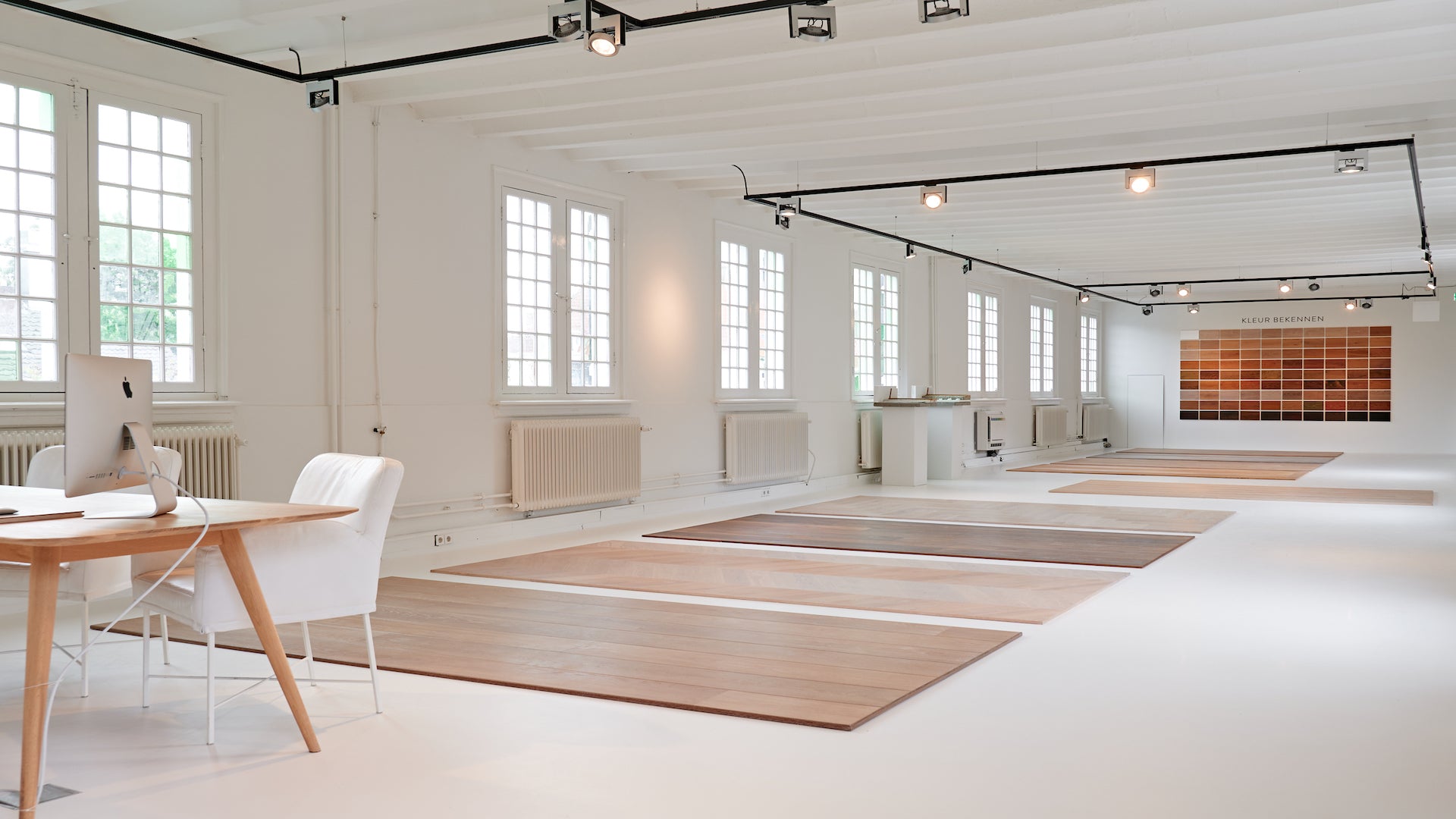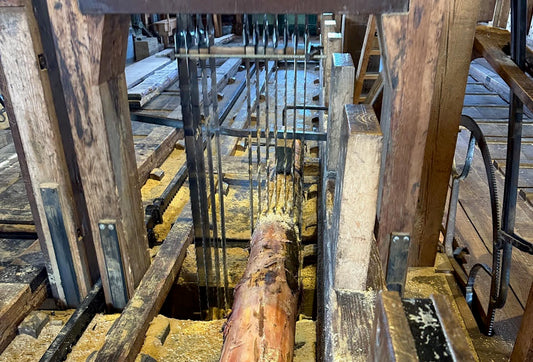Een bezoek aan de Houtzaagmolen "Het Jonge Schaap" op de Zaanse Schans
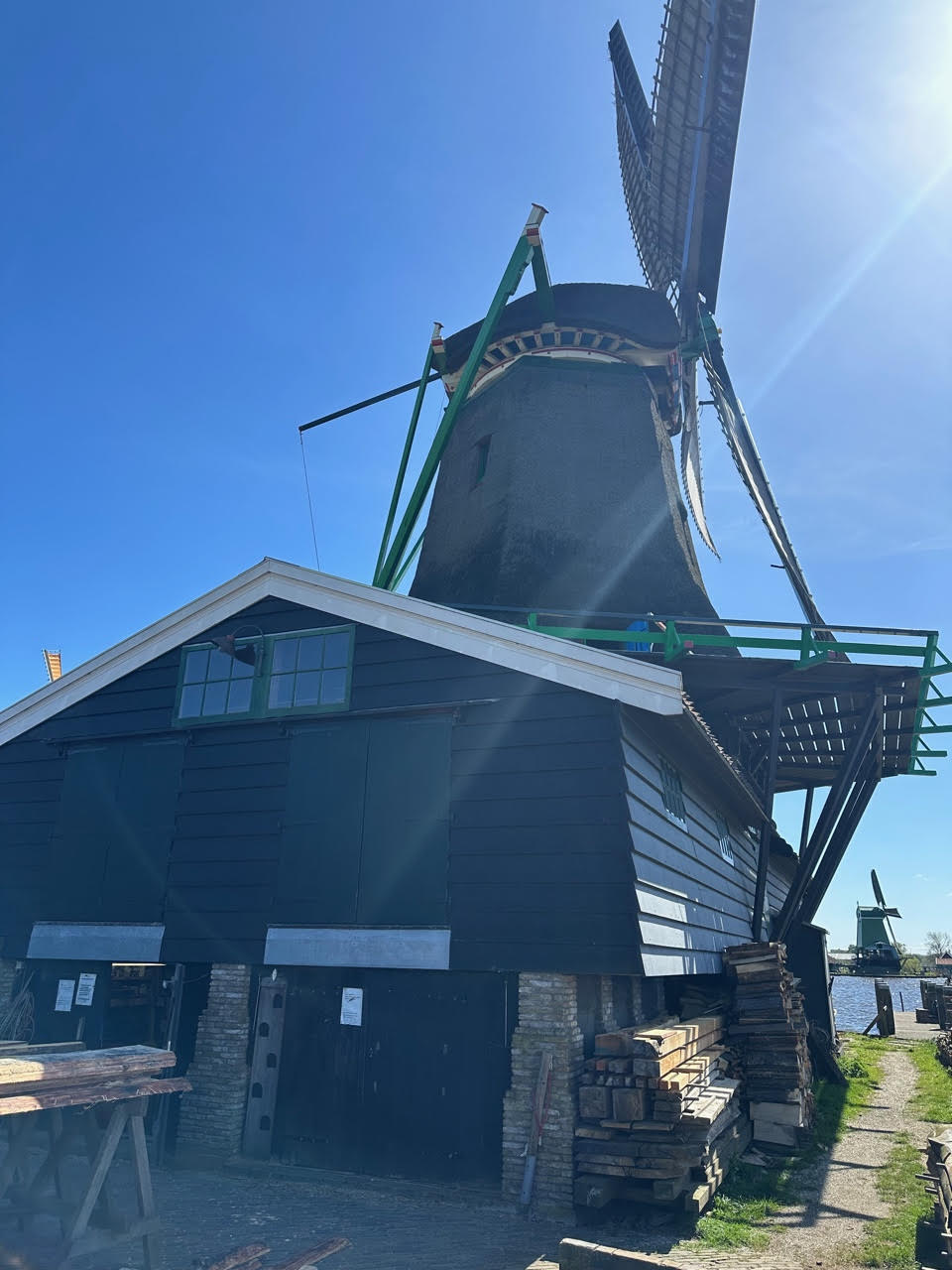
Datum: 12 april 2024
Leestijd: 4 minuten
Auteur: Uipkes Houten Vloeren
Timber sawmills were once the beating heart of Zaans' industry, converting tree trunks into usable planks used for everything from houses to ships. Today, these mills not only offer a fascinating insight into the past, but also an opportunity to learn about craft techniques and the rich history of the Zaan region.
History of sawmills in the Zaan region
In the heyday of the Zaan industry, sawmills were indispensable. They were part of the more than 1000 windmills in operation in the heyday of their existence.
With their mighty blades and powerful saw blades, they transformed tree trunks into planks, playing an essential role in shipbuilding and other craft industries. Zaanse Shipbuilding, as the oldest modern industrial landscape, is closely linked to the rise of these mills and testifies to their historical significance.
Uit het juiste hout gesneden
Ontdek onze prachtige collectie houten vloeren in de showroom
Types of Mills and Their Technology
Wood sawmills come in different shapes and sizes, but they all share the same basic principles. The force of the wind set large saw blades in motion, which in turn could cut tree trunks with a precision and efficiency that was revolutionary at the time. The technology behind these mills is a wonderful example of the craftsmanship and engineering of previous generations.
The Reconstruction of Mill "Het Jonge Schaap"
Het Jonge Schaap" is one of the many sawmills that once stood along the Zaanse Schans. Although the original mill dates from the 17th century, the current mill is a reconstruction that is faithful to the original design and function. Using traditional methods and materials, "The Young Sheep" has become a living monument, where visitors can see how our ancestors worked and lived. An interesting fact is that while the original mill was built in just six months, the rebuilding took more than two years due to the lost craftsmanship.
Ontdek de pracht van hout
Bestel het 108-pagina's tellende gratis houten vloeren magazine van Uipkes
A visit to the sawmill "Het Jonge Schaap"
During a visit to "Het Jonge Schaap" you will be treated to an unforgettable experience. The sound of creaking wood and turning blades fills the air as the mill comes into action, and the artisan craftsmanship of the miller is clearly visible. The enthusiastic people who speak to you convey their passion and love for the mill in a conversation. From pulling logs from the water to carefully sawing planks, every aspect of the process pays tribute to a bygone era.
The Relevance of Sawmills in the 21st Century
Although modern technologies have taken over the role of sawmills in industrial production, they remain invaluable as historical and educational resources. By preserving and restoring mills such as "Het Jonge Schaap" we can preserve the knowledge and skills of the past and pass them on to future generations. Furthermore, these mills serve as tourist attractions, attracting visitors from all over the world, thus contributing to the local economy and the preservation of cultural heritage.
Recommendation
"Het Jonge Schaap" is more than just a mill; it is a living monument to an era of artisan craftsmanship and industrial progress. The mill is worth a visit for local and international tourists . By exploring this mill and its history you can gain a deeper understanding of the rich traditions and innovations that have shaped the Zaan region. Let us cherish and protect this legacy, so that future generations can continue to enjoy the story of "From Stem to Plank".
Bezoek De Showroom
Veelgestelde Vragen
Where is the sawmill 'Het Jonge Schaap' located and what is its history?
Het Jonge Schaap is located on the Kalverringdijk at the Zaanse Schans. Built in 2007, it is the latest addition to Vereniging De Zaansche Molen. The mill originally stood in the Westzijderveld, behind the Zaandam railway station. Unfortunately, the mill was demolished in 1942, but fortunately it had been measured in advance and recorded in detail.
How is Het Jonge Schaap powered and what characteristics does the mill have?
Het Jonge Schaap is an overhead sawmill that is powered by the wind. It has a hexagonal shape and functions like a sawmill. The mill has three saw frames, two sledges with scrabble works and two windmills. It has a characteristic detailed decoration, such as the simple beard with the inscription "ANNO 2007" and the name "Het Jonge Schaap" in the gable of the sawing shed.
How did the rebuilding of Het Jonge Schaap proceed and who was involved?
After years of preparations, the reconstruction started on September 24, 2005, with the opening on September 27, 2007. The realization was the largest project ever by Vereniging De Zaansche Molen and was made possible by various parties, including the Province of North Holland, the Municipality of Zaanstad and various sponsors and donors. Architectural firm Zijlstra-Schipper, contractor Hillen & Roosen, mill factory Saendijck and specialized subcontractors played a crucial role in this project.
Blijf op hoogte van nieuws over vloeren en interieur
